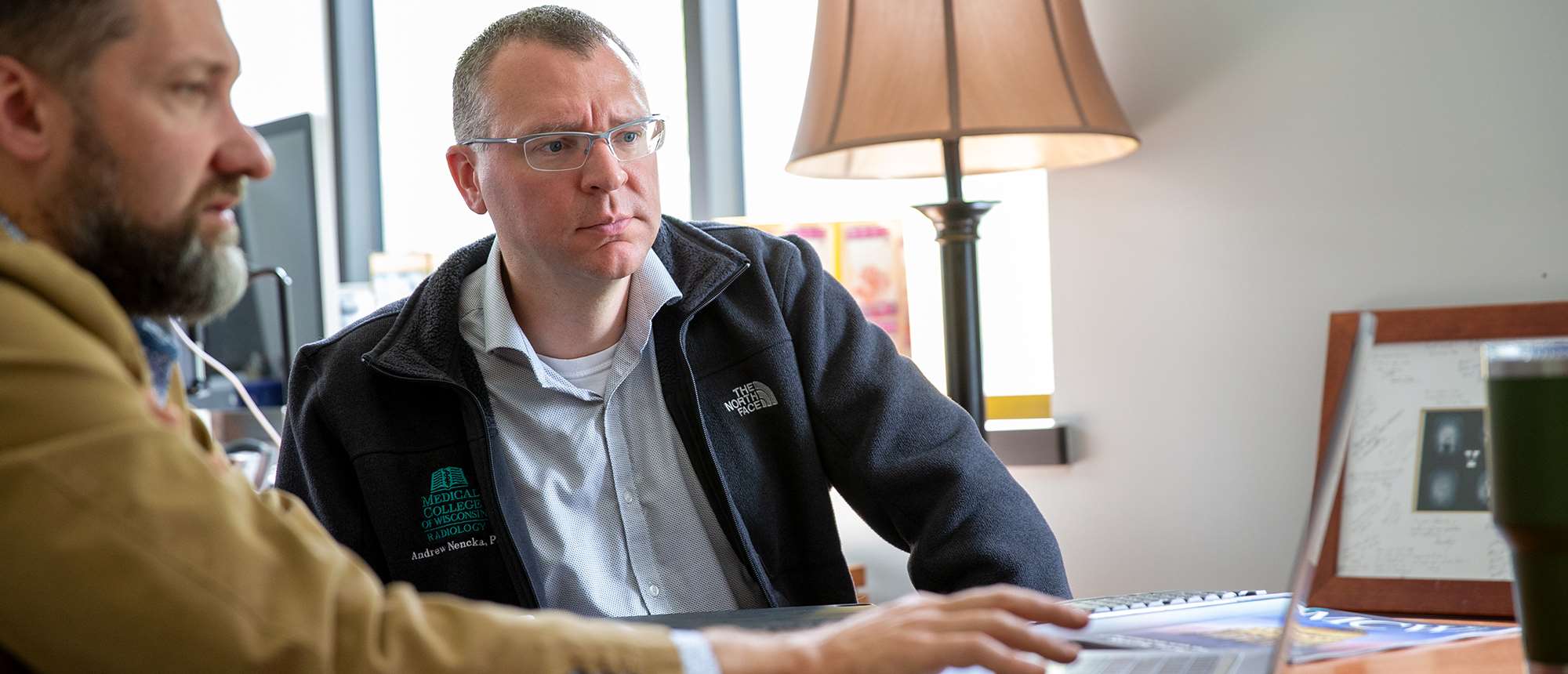Breaking Barriers in Medical Imaging: Dr. Andrew Nencka's Odyssey in MRI Innovation

Meet Andrew Nencka, PhD, associate professor and operations director at the Center for Imaging Research (CIR) at the Medical College of Wisconsin (MCW). Dr. Nencka focuses on MRI technology and uses to advance medical imaging for the benefit of patients around the world.
Dr. Nencka's scientific journey began with a childhood passion for astronomy. He built a telescope with his father, which eventually evolved into a profound love for physics. Motivated by a desire to tangibly impact lives, Dr. Nencka transitioned from astronomy to medical physics. Pursuing a PhD in biophysics marked a pivotal moment for the scientist, opening doors to groundbreaking research at the intersection of physics and healthcare.
"I may not personally teach one patient how to walk again after a stroke. However, the technology we're developing has the potential to be integrated into thousands of scanners distributed worldwide and facilitate diagnoses that can pave the way for their treatment," the researcher says. "It may not involve directly touching one patient, but it does touch the hardware that reaches thousands of patients."
At the CIR, Dr. Nencka’s research centers on enhancing magnetic resonance imaging technology with an emphasis on making exams more efficient and addressing challenges such as reducing metal artifacts in imaging – a critical concern when patients have metallic implants. When an individual undergoes imaging with a metal object inside their body, it alters the configuration of the magnetic field and poses a significant challenge to obtaining clear MRI images. It is important for patients to tell their imaging specialist if they have any device or metal in their body.
"I've been looking at what we can do to make MRI faster and more efficient, with the ultimate goal of having MRI scans that are as fast as CT scans," Dr. Nencka says.
A significant breakthrough in this journey is the Hyperfine MRI system – a portable and low-cost solution designed to transcend infrastructure limitations in resource-limited settings.
The impact of this innovation on patient care could be substantial, Dr. Nencka says. He envisions a future where Hyperfine MRI reduces the need for patients to travel long distances for diagnostic appointments, particularly benefiting those in remote locations.
He also emphasizes the global impact of the Hyperfine MRI system, especially in regions where power grids struggle to support advanced systems. The ability to run on a battery pack makes it an invaluable tool in areas like Sub-Saharan Africa, addressing urgent medical needs such as malaria-induced hydrocephalus within minutes.
Dr. Nencka's strategic partnership with Hyperfine aims to enhance its MRI system by incorporating unique contrasts developed in the CIR's high-field MRI lab. This collaborative effort addresses challenges inherent in emergency department imaging, holding the promise of elevating the impact of MRI technology in critical medical scenarios.
"Connecting the dots, we saw that our metal artifact reduction sequences were precisely the contrast that they wanted to see come into the product," says Dr. Nencka.
This insight embodies the seamless alignment between the advancements pioneered at CIR and Hyperfine's vision, underlining the collaborative breakthroughs that pave the way for enhanced emergency department imaging capabilities.
"It's rewarding to be engaged in something that will impact patients. The potential impact, especially with this Hyperfine ultra-low field system, seems to be the greatest opportunity for influence in my career," Dr. Nencka says. “It's something that can transform patient care and the way healthcare systems work and treat patients."



